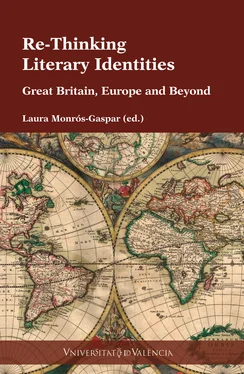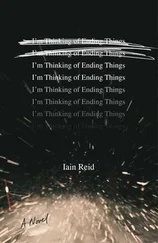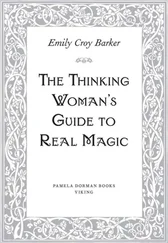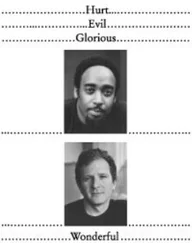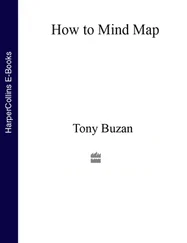AAVV - Re-Thinking Literary Identities
Здесь есть возможность читать онлайн «AAVV - Re-Thinking Literary Identities» — ознакомительный отрывок электронной книги совершенно бесплатно, а после прочтения отрывка купить полную версию. В некоторых случаях можно слушать аудио, скачать через торрент в формате fb2 и присутствует краткое содержание. Жанр: unrecognised, на английском языке. Описание произведения, (предисловие) а так же отзывы посетителей доступны на портале библиотеки ЛибКат.
- Название:Re-Thinking Literary Identities
- Автор:
- Жанр:
- Год:неизвестен
- ISBN:нет данных
- Рейтинг книги:3 / 5. Голосов: 1
-
Избранное:Добавить в избранное
- Отзывы:
-
Ваша оценка:
- 60
- 1
- 2
- 3
- 4
- 5
Re-Thinking Literary Identities: краткое содержание, описание и аннотация
Предлагаем к чтению аннотацию, описание, краткое содержание или предисловие (зависит от того, что написал сам автор книги «Re-Thinking Literary Identities»). Если вы не нашли необходимую информацию о книге — напишите в комментариях, мы постараемся отыскать её.
Re-Thinking Literary Identities — читать онлайн ознакомительный отрывок
Ниже представлен текст книги, разбитый по страницам. Система сохранения места последней прочитанной страницы, позволяет с удобством читать онлайн бесплатно книгу «Re-Thinking Literary Identities», без необходимости каждый раз заново искать на чём Вы остановились. Поставьте закладку, и сможете в любой момент перейти на страницу, на которой закончили чтение.
Интервал:
Закладка:
Scott’s project of collecting and editing Border ballads has been located within an international quest for national poetries during the late eighteenth and early nineteenth centuries, which placed a new value on the fragmentary relics of traditional, popular poetry or song:
Such traditional balladry became in effect the ‘national song’ of the peoples to whom it was attributed. This is a relatively clear process in the very differing national contexts of France, Germany, Spain, Finland or even the United States: the Chanson de Roland , the Nibelungenlied , the ballad of the Cid , the Kalevala and, in imitation, Longfellow’s Hiawatha , were all advanced as expressions of the national spirit. (Dentith 2006: 11).
During the same period, the success of James Macpherson’s publication of Ossian’s Fingal , a cycle of heroic songs purportedly translated from an ancient Gaelic manuscript, testified to a comparable hunger for a British ‘national epic’ (Dentith 2006: 23-5; Kelly 2010: 24-9). In response, Scott used his own passion for ballad collecting to re-define the troubled Borders region as the wellspring of a ‘National Muse’ for an emerging Great Britain (Scott 1902: vol.1, 7).
In a later ‘Introductory Essay on Popular Poetry’ (1830), Scott positioned his own researches in relation to the fashionable intellectual ferment surrounding the ‘Homeric Controversy’, rooted in historicist proposals that the great epics of Greece emerged from popular, orally-composed ballads or ‘lays’, and that Homer himself might not have been a single poetic genius, but rather a composite figure drawn from many singers operating within a traditional framework of heroic songs. Scott borrowed from the Homeric ‘primitivists’ a sense that an ancient, oral poetry could function as ‘national verse’, expressing the character of an entire people (1902: vol. 1, 3), implicitly proposing the right of the balladry of the Borders to be considered the equivalent of archaic Greek epic. However, Scott distances himself from the potentially radical inference that any singer of old songs might potentially be a maker of national verse. He insists that ‘the qualities necessary for composing such poems are not the portion of every man in the tribe’ (1902: vol. 1, 3). The creation of a national poetry, he argues, is ‘dependent upon the rise of some highly gifted individual, possessing in a pre-eminent and uncommon degree the powers demanded, whose talents influence the taste of a whole nation’ (1902: vol. 1, 5). In consequence, it has been argued, Scott transforms songs which had previously engaged singers and listeners in active participation across a range of social settings into antiquarian artefacts under the editorial control of a single, literary authority, imposing his own political and cultural vision upon the texts he collects in the service of ‘a wider British patriotism’ (Dentith 2006: 42). These ballads’ ‘traditionalist sentiment’ (appropriately edited) will now be ‘supportive of a cohesive British union and empire’ (Oliver 2005: 67-8). The Scott evoked in such analyses might be likened to the heroine of the song he titled ‘The Young Tamlane’ (1902: vol.2, 388-407), wresting the Borders’ ballads out of shape-shifting orality—or, at least, the vulgarity and textual variability of the popular ballad press (Atkinson 2014: 69-88; McDowell 2010; Perry 2010; and Sorensen 2007)—into polite, literary conformity, in order to give the infant Britain a respectable poetic genealogy.
However, in recent years, critics of Scott’s novelistic oeuvre (which began with the publication of the sensationally successful Waverley in 1814) have identified a more subversive spirit operating beneath the surface of his canonical fictions. According to such readings, Scott’s dizzying range of authorial and editorial alter-egos reveals a conscious appreciation of the range of competing voices that would seek to define Scottish identity, and to fix the kingdom’s place within an emerging Great Britain. From this perspective, Walter Scott still (in Caroline McCracken-Flesher’s phrase) ‘stands central to the cultural work that is Scotland’ (2005: 4), but rather than figuring as the authorial fixer of a fantasy of romantic nationhood he becomes the maker of a multi-authored Scotland that ‘stands always in formation’ (2005: 164). Comparably, Herbert Tucker locates Scott’s early poetic output (particularly The Lay of the Last Minstrel , 1805) as ‘uniquely close to the means of balladry’s dissemination’, meaning that the professional, literary author nonetheless retains a deep sense of the ‘performance values’ associated with traditional narrative and song (2008: 122). Scott, Tucker argues, experiments with new modes of poetic ‘conviviality’, soliciting a sympathetic hearing for his minstrel’s song through the pleasures of ‘vocal performance’ (124-6). Such arguments begin to figure Scott as operating in a debatable land between oral and literary cultures, aware of his own implication in ‘the act of inscriptive violence whereby orality yields to literacy’ (126), yet also conscious of the transformative potential associated with the popular vocalisation of nation-shaping narratives, and fascinatedly ventriloquising such voices in his literary works. This version of Scott has affinities with Tamlane himself, shape-shifting and subtle, an inhabitant of multiple worlds, cannily negotiating between traditional Borders orality and the new print marketplaces of an emergent Great Britain. Little wonder that McCracken-Flesher describes Scott, and his works, as a potent ‘site of contestation producing the nation today’ (2005: 5). In this sense, the artists considered in this chapter are fitting heirs to Scott’s enterprise, their works activating a series of Scott-ish collisions between traditional song and contemporary theatre practices to explore how Scottish, English, and British identities might be contested and transformed in a twenty-first century context.
The Strange Undoing of Prudencia Hart (2011)
David Greig’s ballad-inspired play The Strange Undoing of Prudencia Hart (2011) begins with a vociferous wrangle about Walter Scott’s status as poetic artificer and nation-builder. At an academic conference in the Scottish Borders, traditionalist scholar Prudencia is infuriated by postmodern arguments interpreting Scott’s ballad collection as ‘a political act’ with the aim creating ‘a “Scottish” identity every bit as artificial as Lady Gaga’s’ (2011: 12). This violent disagreement between Prudencia and her irreverent colleague is tellingly entangled with the emotive appeal of nation (it’s his use of air quotes around the word ‘Scottish’ which finally makes her long to ‘punch him in the throat’) (12). But Greig’s acknowledgement of Scott’s appropriation of traditional songs in order to endorse a particular, conservative brand of poetic nationalism sets the tone for the drama’s playful exploration of a contemporary Scotland in which global (and globalized) celebrity culture offers a more familiar set of icons than the old ballads of the Borders, and in which inherited pieties of nation and/or union have given way to a significantly more complex range of identities and debates. Meanwhile, the locations and performance practices associated with ballad singing are re-appropriated to facilitate audiences’ ‘social engagement’ (Harvie 2013: 5), with spectators immersed in a pub-like setting where they’re invited to eat, drink, make a noise, and get personally involved in the theatrical re-telling of a transformative tale.
The play’s closing section is structured around a dramatic revision of the ballad of Tamlane, in which the swaggering, Scott-bashing Colin Syme must rescue Prudencia from the clutches of a folk-loving devil, an epic battle fought out in a snowy ASDA car park. In the build-up to this sequence, Colin’s unlikely heroism is encoded through a plethora of pop-culture signifiers. He is compared to ‘Jay-Z’ and ‘Darth Vader’ (2011: 71), ‘Ronaldo’, ‘Elvis’ (2011: 72) ‘Hercules’, ‘Finn Machuill’, ‘Samuel L. Jackson’, ‘Jackie Chan’ and ‘a beer-bellied ninja’, his manhood cradled in ‘proud Calvin Kleins’, his insides warmed by a mixture of ‘Jack Daniels and Diet Coke’ (2011: 74). This ramshackle conglomeration of heroic types and tropes, promiscuously borrowed from a range of international cultures (often by way of Hollywood or multinational corporations), is wrapped up in a musical theme that owes less to the Borders than to the football terraces. As the play’s narrating ensemble explain, ‘The Ballad of Co-Lin’ is ‘not exactly a ballad it’s mair a / Football chant to the tune of “Guantanamera”’ (2011: 71), a Cuban song regularly sung by UK football fans. Perhaps tellingly, this is the first moment at which the play’s audiences are explicitly invited to lend their own voices to the developing narrative (2011: 71). Previously, audiences have listened to traditional ballads and songs performed by the company (2011: 3, 43), the show’s dramaturgy operating upon the assumption that present-day theatregoers aren’t confident participants in traditional music-making. Still, the cheeky modernity of ‘The Ballad of Co-Lin’ doesn’t stop it from functioning in some of the same ways as a traditional ballad, using collective vocalisation to punctuate and structure an emerging supernatural story, and seducing the play’s co-present audience into becoming the collective co-creators of an extravagantly fantastic narrative. Simultaneously, Greig’s choice of melody re-positions the magical transformations of Tamlane within a contemporary Scotland which is itself shaped by an ongoing interplay between local and global identities. In this way, participants in the drama find themselves vocally engaged in creating a shared imaginative territory which is (as David Pattie argues), like contemporary Scotland itself, ‘an infinitely variable landscape’, potentially containing ‘an infinity of experiences’ (2016: 30).
Читать дальшеИнтервал:
Закладка:
Похожие книги на «Re-Thinking Literary Identities»
Представляем Вашему вниманию похожие книги на «Re-Thinking Literary Identities» списком для выбора. Мы отобрали схожую по названию и смыслу литературу в надежде предоставить читателям больше вариантов отыскать новые, интересные, ещё непрочитанные произведения.
Обсуждение, отзывы о книге «Re-Thinking Literary Identities» и просто собственные мнения читателей. Оставьте ваши комментарии, напишите, что Вы думаете о произведении, его смысле или главных героях. Укажите что конкретно понравилось, а что нет, и почему Вы так считаете.
